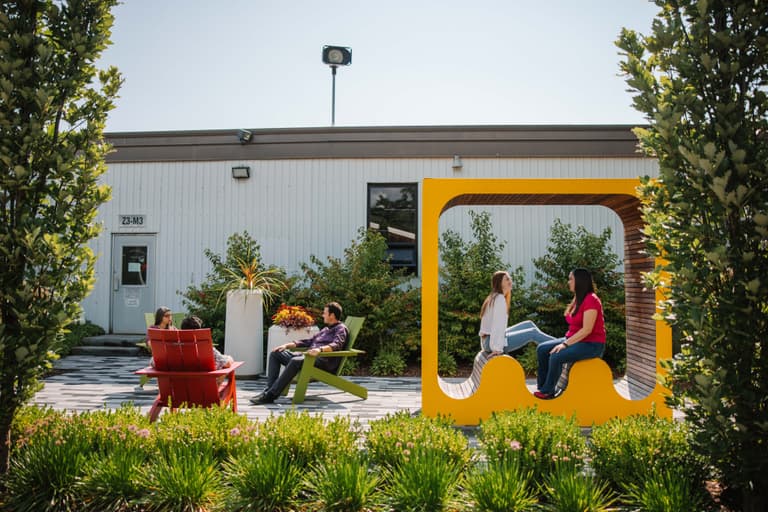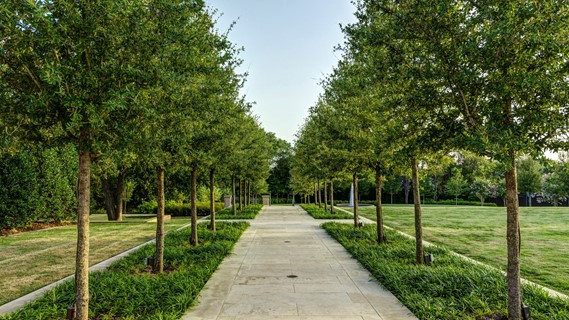Getting The Hilton Head Landscapes To Work
Getting The Hilton Head Landscapes To Work
Blog Article
Hilton Head Landscapes - Questions
Table of ContentsHilton Head Landscapes - The FactsHilton Head Landscapes Things To Know Before You BuyThe Best Strategy To Use For Hilton Head LandscapesThe Hilton Head Landscapes IdeasFascination About Hilton Head LandscapesWhat Does Hilton Head Landscapes Do?The Best Strategy To Use For Hilton Head LandscapesThe Of Hilton Head Landscapes
Form compatibility is also a major part of unity in designone or more strikingly various kinds are good for contrast and emphasis, however generally all other types must have some resemblances for an unified look. Appearance refers to just how crude or great the surface of the plant or hardscape material really feels and/or looks.
Instances of plants with coarse structure consist of philodendrons, agaves, bromeliads, hollies, hands, and hydrangeas. Hardscape with rugged structure consists of rough-cut rock, rough-finished block, and unfinished timber with knots and a raised grain. Matured or old construction product that keeps a weather-beaten surface area is frequently crude in appearance. Attributes that produce fine texture include tiny vegetation; slim, strappy leaves (turfs) or tall, slim stems; little, thick twigs and small branches; long stems (vines); and small, fragile blossoms.
Some Known Facts About Hilton Head Landscapes.
A lot of plants are medium structure, because they can not be referred to as having either crude or fine structure. They are characterized by medium-sized fallen leaves with easy forms and smooth edges. The average-sized branches are not largely spaced nor extensively spaced, and the overall type is generally rounded or mounding. Medium-textured plants work as a background to web link and combine the crude- and fine-textured plants.

To make a room feel smaller sized, place the coarse appearances along the external boundary and the great appearances closest to the viewer. The detail of the rugged appearance makes the plants appear closer and makes the space really feel smaller. The viewed appearance of plants can also alter with the distance from the plant.
About Hilton Head Landscapes
Strong shades raise the contrast and make the texture show up coarser, while muted colors can flatten structure. Hardscape with a crude texturesuch as very rough rocks and vibrant, large timberstends to make all plant material show up extra medium textured. Designers often develop a structure research (Figure 8) on paper to assist determine the arrangement of plant materials.
Shade in plant material and hardscape includes interest and selection to the landscape. Shade is the most conspicuous component in the landscape and is normally the focus of the majority of homeowners; nonetheless, it is likewise the most momentary element, usually lasting just a few weeks a year for private plants.
Not known Facts About Hilton Head Landscapes
A basic summary of the color wheel includes the 3 primary colors of red, blue, and yellow; the 3 second colors (a mix of 2 primaries) of green, orange, and violet; and six tertiary shades (a mix of one adjacent main and additional shade), such as red-orange. Color concept discusses the partnership of colors per various other and just how they ought to be utilized in a make-up.

Comparable (occasionally called unified) shade schemes are any three to five colors that are adjacent on the color wheel, such as red, red-orange, orange, yellow-orange, and yellow, or blue, blue-violet, and violet (landscapers hilton head island). The colors belong to every various other because they typically include two primaries mixed to form a secondary and two tertiary colors, which indicates they share common residential properties
Corresponding shades are frequently located naturally in flowers; an usual set is yellow and violet. Shade is located in the blossoms, foliage, bark, and fruit of plants.
Rumored Buzz on Hilton Head Landscapes
Environment-friendly vegetation in all its different shades is the leading shade by amount, however other colors catch attention much more readily due to their high contrast to the color eco-friendly. Shade is also discovered in buildings, rocks, pavers, timber, and furniture. Many colors in natural products, such as stone and timber, are commonly muted and tend to be variations of brown, tan, and light yellow.
Color is a crucial aspect for producing rate of interest and selection in the landscape. Colors have residential or commercial properties that can impact emotions, spatial perception, light high quality, equilibrium, and emphasis. One home of shade is explained relative to temperaturecolors seem trendy or warm and can impact feelings or feelings. Amazing shades tend to be calming and should be made use of in areas for relaxation and peacefulness.
Top Guidelines Of Hilton Head Landscapes
Trendy shades have a tendency to decline and are viewed as being farther away, making a room really feel larger. Shade can likewise be used to record interest and direct sights.
Brilliant yellow, which has the highest intensity, also has a high comparison with all other shades (typically defined as a "pop" of color) and need to be utilized sparingly. A little amount of intense shade has as much visual weight as a huge amount of a much more suppressed or weaker shade.
Comparable (occasionally called harmonious) color pattern are any type of three to five shades that are adjacent on the shade wheel, such as red, red-orange, orange, yellow-orange, and yellow, or blue, blue-violet, and violet. The colors belong to every other due to the fact that they commonly consist of two primaries blended to develop a secondary and 2 tertiary colors, which means they share common buildings.
Examine This Report on Hilton Head Landscapes
They tend to have high contrast in between them. One of the most common collections are violet news and yellow, red and environment-friendly, and blue and orange. Complementary colors are typically discovered normally in blossoms; an usual pair is yellow and violet. Color is discovered in the blossoms, vegetation, bark, and fruit of plants.
Eco-friendly vegetation in all its numerous tones is the dominant shade by quantity, yet various other colors catch interest quicker as a result of their high comparison to the color green - bluffton landscaping - https://slides.com/h1tnhdlndscps. Shade is additionally located in structures, rocks, pavers, wood, and furniture. Most colors in natural materials, such as rock and timber, are generally soft and tend to be variants of brown, tan, and pale yellow
The smart Trick of Hilton Head Landscapes That Nobody is Talking About
Color is an essential component for producing interest and selection in the landscape. Colors have buildings that can impact feelings, spatial understanding, light quality, balance, and focus. One property of color is explained relative to temperaturecolors seem cool or cozy and can affect emotions or sensations. Great colors have a tendency to be relaxing and ought to be made use of in areas for relaxation and tranquility.
The "temperature level" of colors can additionally impact the perception of range. Cool shades tend to decline and are viewed as being further away, making a space feel bigger. Warm shades tend to breakthrough and are regarded as being closer, making an area feel smaller sized. Color can likewise be utilized to catch interest and straight views.
Brilliant yellow, which has the highest possible intensity, additionally has a high contrast with all various other colors (commonly explained as a "pop" of shade) and need to be used moderately. A tiny quantity of extreme shade has as much visual weight as a big amount of a more controlled or weaker color.
Report this page